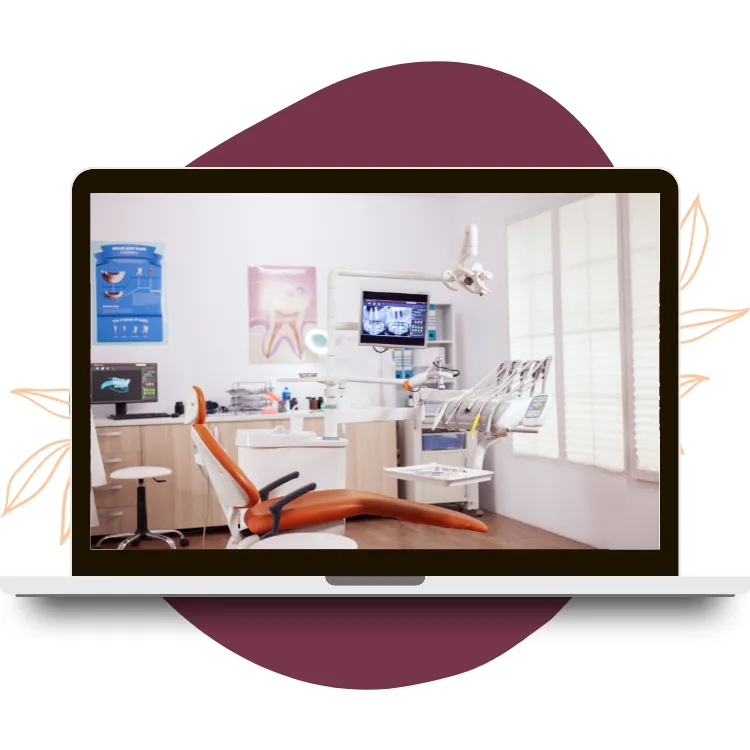
Retention By Design - How The Environment Shapes Trust
Step into your clinic for a moment — not as the practitioner, but as the patient. Pause at the front door. What do you notice first?
Is it the warmth of a friendly greeting, or the clutter of an overfull reception desk? Is the waiting room calm and inviting, or does it hum with low-level stress? Do you feel certain about where to go next, or do you second-guess yourself until someone points the way?
These tiny details matter more than we often admit. Patients don’t just form impressions based on your treatment — they’re already forming them before you’ve even said hello. And here’s the surprising truth: the design of your environment has as much to do with patient retention as the quality of your care.
The Subtle Power of Space
Think about the difference between walking into a restaurant where the tables are sticky, the menus dog-eared, and the waiter distracted — versus one where everything is clean, calm, and clear. Same food, maybe. But your trust in the experience? Completely different.
The same applies in healthcare. Patients are constantly picking up signals: order or chaos, calm or tension, caring or transactional. These signals create a backdrop against which your words and treatment are interpreted. A strong care plan delivered in a cluttered, confusing environment doesn’t feel strong. It feels shaky.
What does a messy counter say about how you handle patient files? What does a flickering light suggest about your attention to detail? What does a receptionist’s distracted tone communicate about whether you’ll remember a patient’s progress? Patients rarely articulate these things out loud. But they feel them. And feelings are what drive behaviour. If something feels inconsistent or unsafe, even subtly, they are less likely to rebook.
And it’s not just patients who feel the weight of a poorly designed environment. Practitioners and staff absorb it too. The pile of forms you keep meaning to sort through. The constant “Sorry, can you just fill this out again?” because something got misplaced. The last-minute scramble to clean a treatment space before the next appointment. All of it creates micro-stress that seeps into your body language, your tone, your energy. Patients pick up on that.
The opposite is also true. A well-designed environment creates calm not just for patients but for you. And when you feel calmer, your confidence rises — which patients notice and mirror back.
Small Shifts, Big Impact
I once visited two clinics back-to-back. The first had brilliant clinicians but a chaotic front desk. Phones ringing endlessly, files scattered, patients queued with no acknowledgement. Even though the practitioner was competent, the whole experience felt uncertain. Patients seemed restless.
The second had simple systems. A receptionist who smiled and greeted patients by name. A waiting area with clear signage and soft lighting. Everything flowed smoothly. The practitioner didn’t feel rushed. Patients looked at ease. Guess which clinic had stronger retention? It wasn’t about skill. It was about design. Guess which one I went back too?
The hopeful part is that you don’t need to renovate your whole clinic to change how patients feel. Tiny shifts compound. Declutter the reception desk. Add a clear sign that says Welcome — please check in here. Make sure every patient is greeted within thirty seconds of arrival. Create a consistent phrase your team uses when rebooking.
Each change is small. Together, they add up to an environment that feels trustworthy. Patients aren’t just buying your time. They’re buying certainty. They’re buying reassurance that if they invest their energy, money, and hope in you, the experience will be worth it.
The design of your environment is the proof before the proof. It says: You can trust us. You’re safe here. We have you. And when that message is clear, rebooking feels like the obvious, natural thing to do.
Here’s the beauty: when you create retention by design, you don’t have to hustle for re-bookings. You don’t have to chase as many no-shows. You don’t have to convince. The environment does some of the heavy lifting for you. Patients are more likely to turn up, to rebook, and to follow through — because the trust is already in place.
And remember: “Systems don’t make it impersonal. They make it possible.” A well-designed clinic environment is just another system. One that works quietly in the background to support the human connection you’re already building.
A Closing Reflection
So ...Next time you walk through your clinic, slow down. See it with fresh eyes. Better yet, see it as if you were a first-time patient. Where does your attention snag? Where do you feel calm? Where do you sense confusion? Those are the places where retention is either being built or lost — before you’ve even spoken.
Because retention isn’t just about what you say in the room. It’s about what patients feel the moment they step into your space. Every choice you make in your environment — from how tidy the front counter is, to how consistently your team greets patients — is part of the care you provide.
Care isn’t just in the treatment plan, It’s in the design, and when you design for clarity, comfort, and consistency, you design for trust.
And where trust is present, retention follows naturally.
